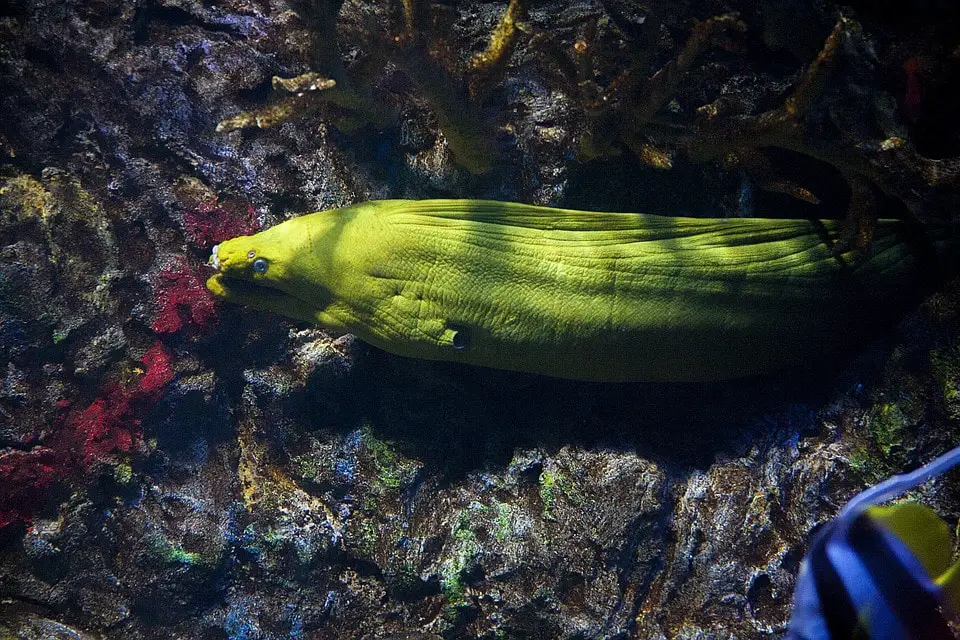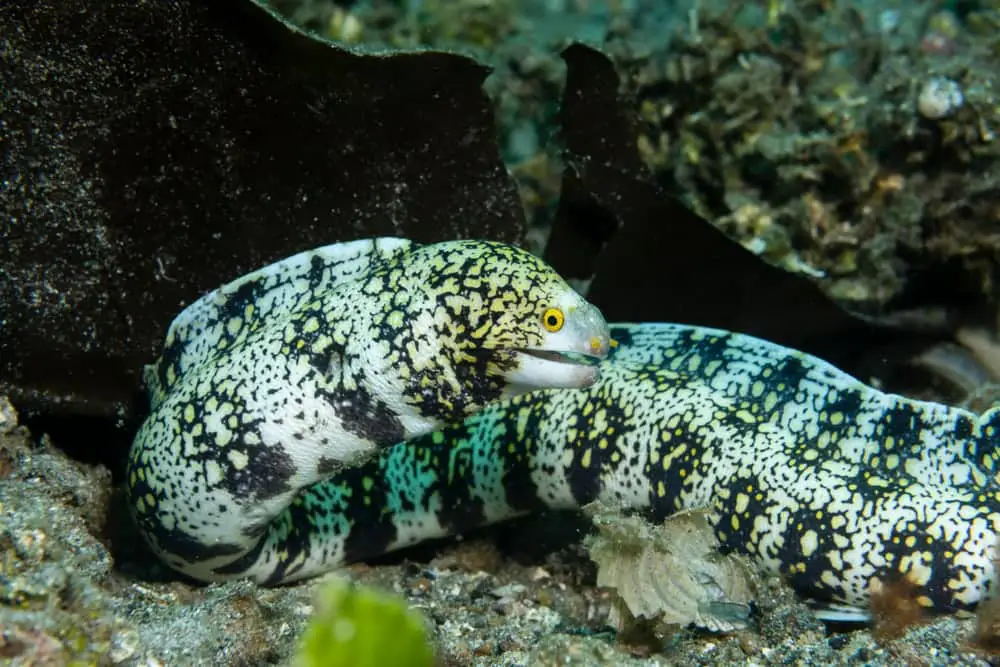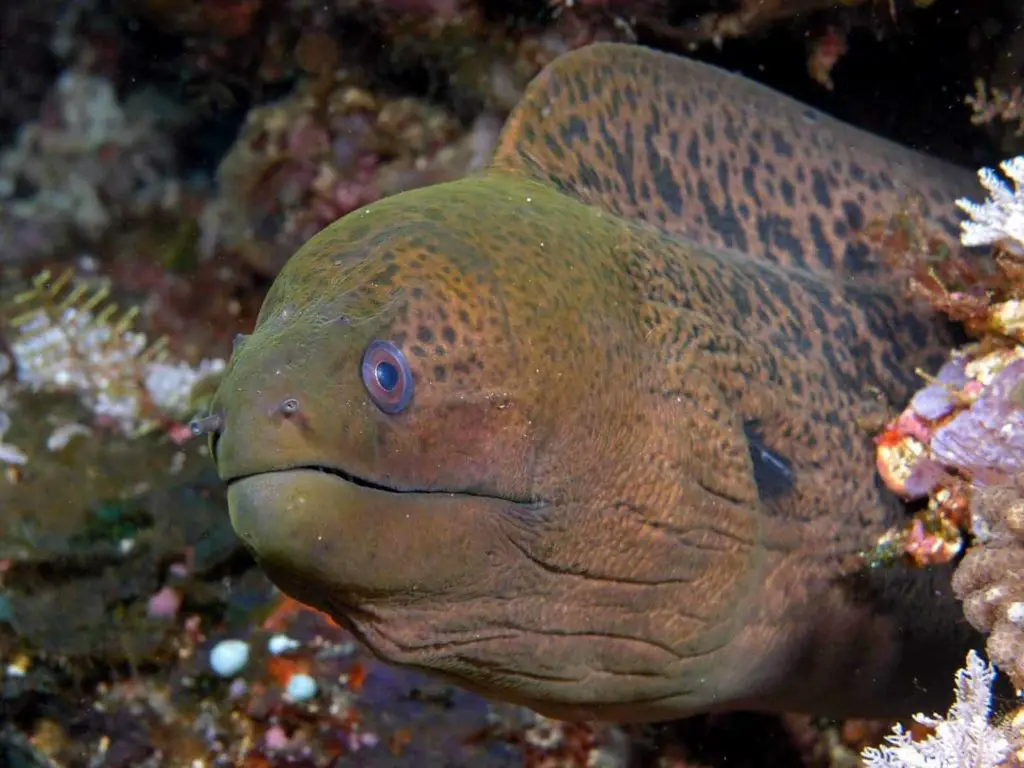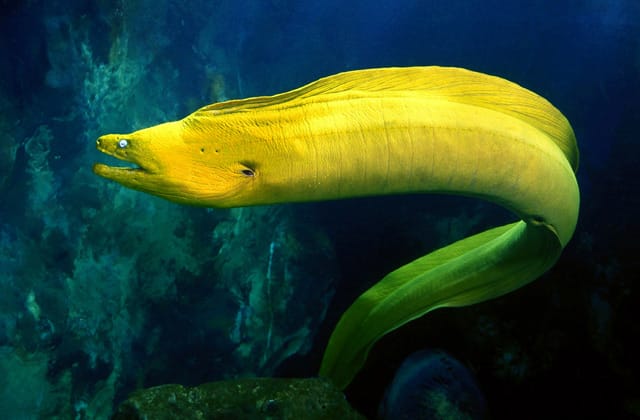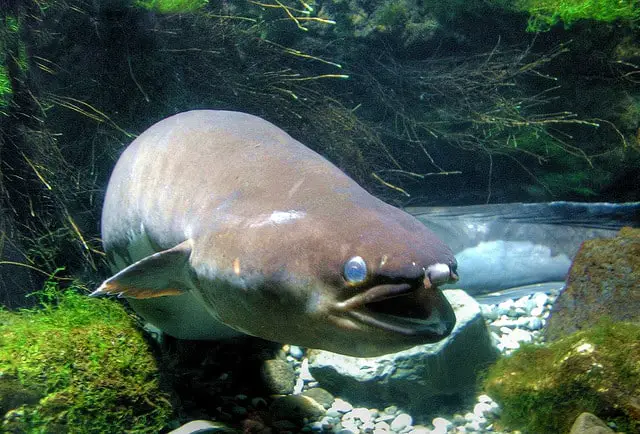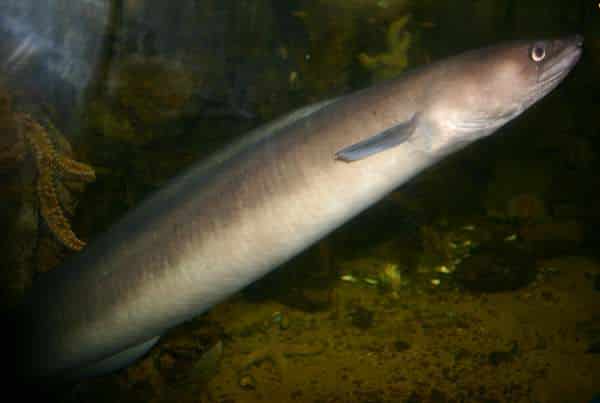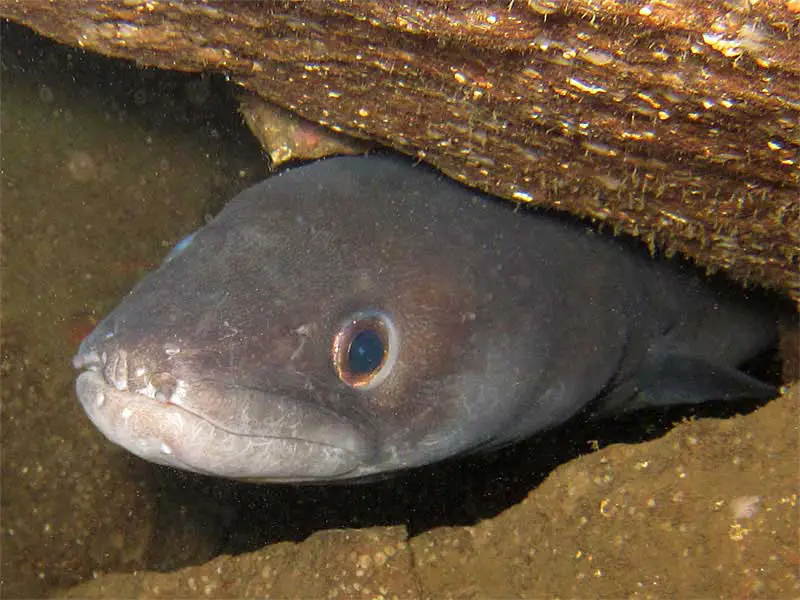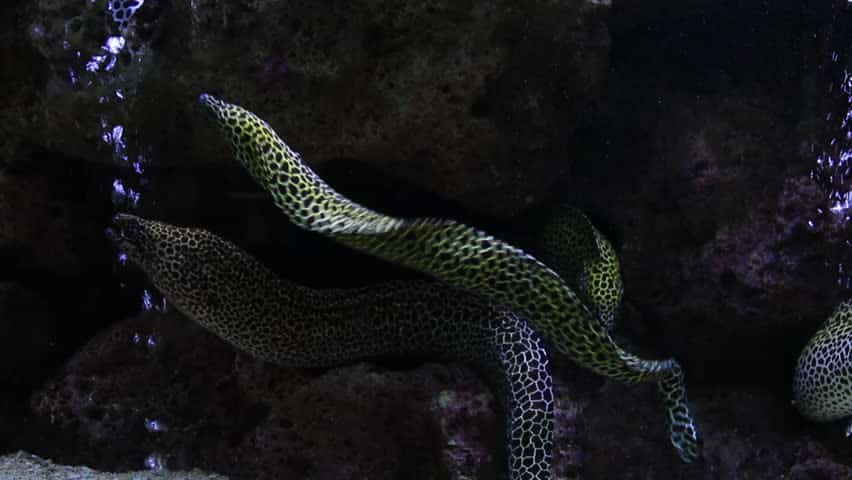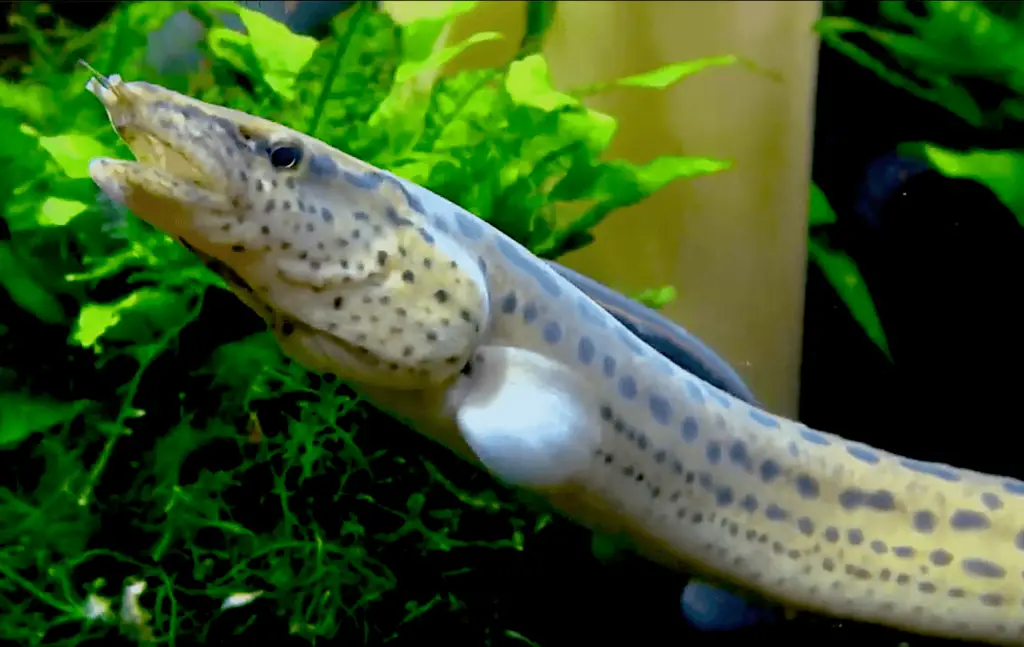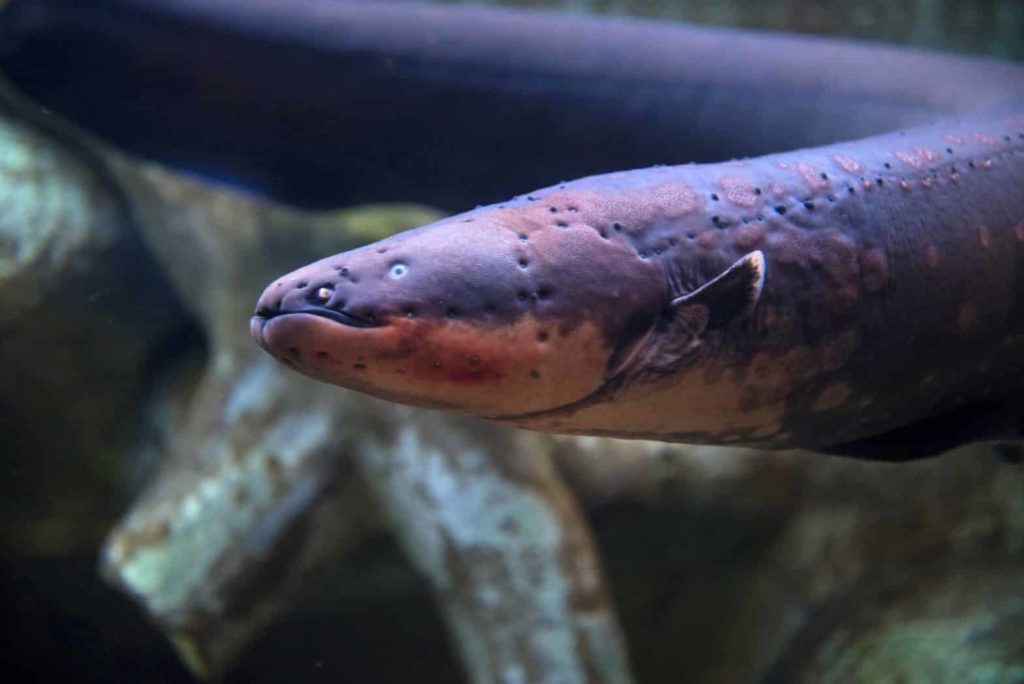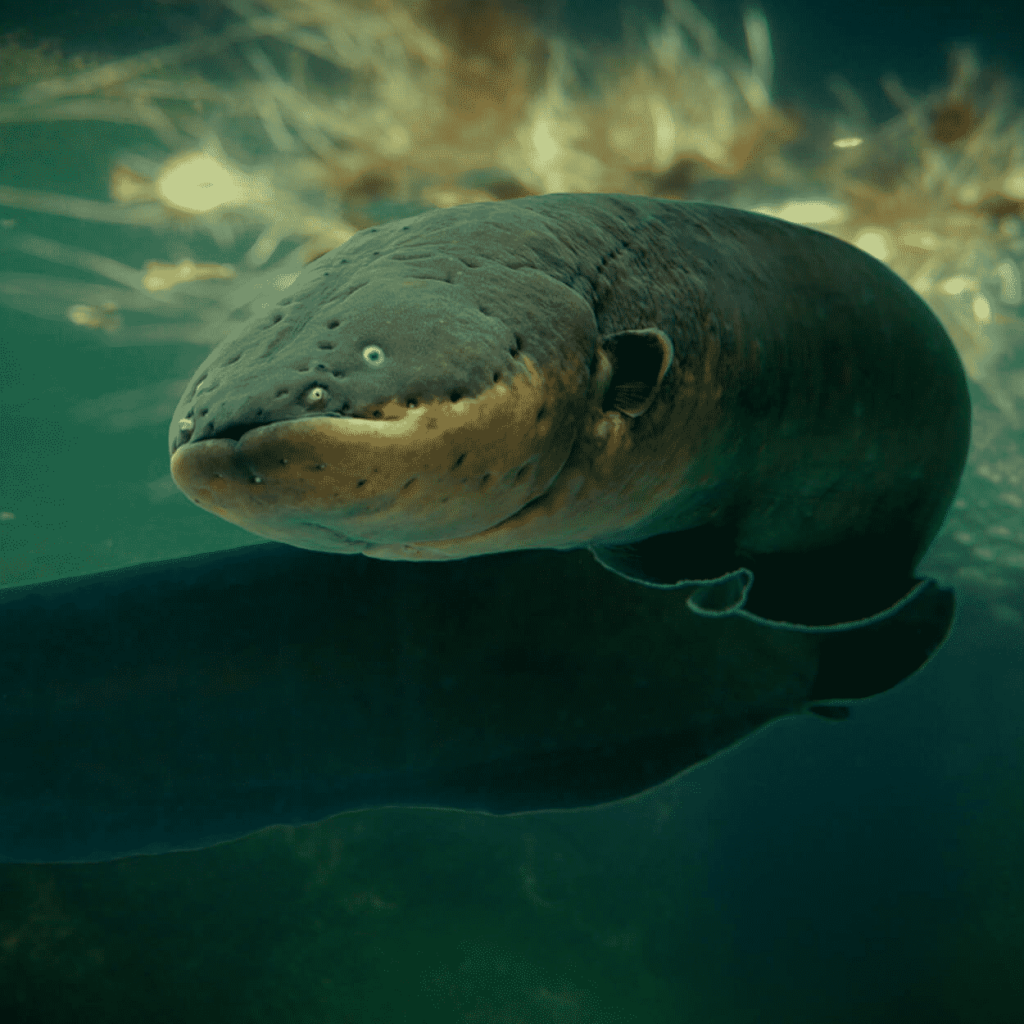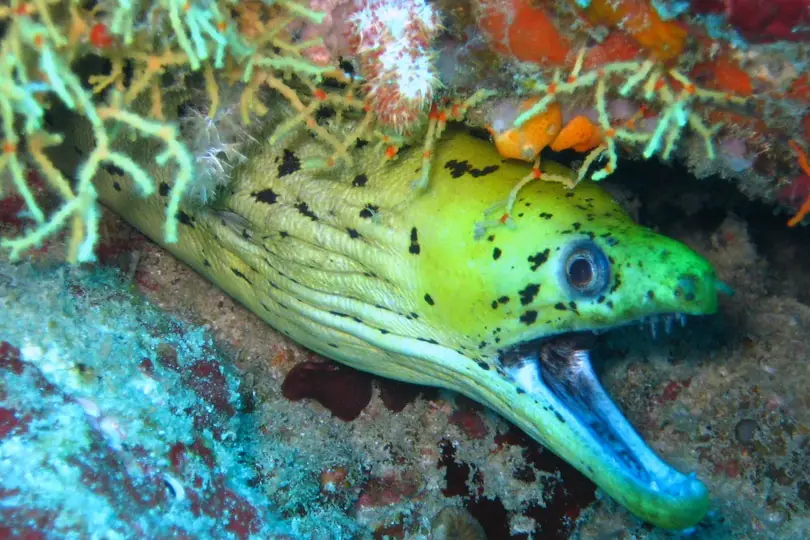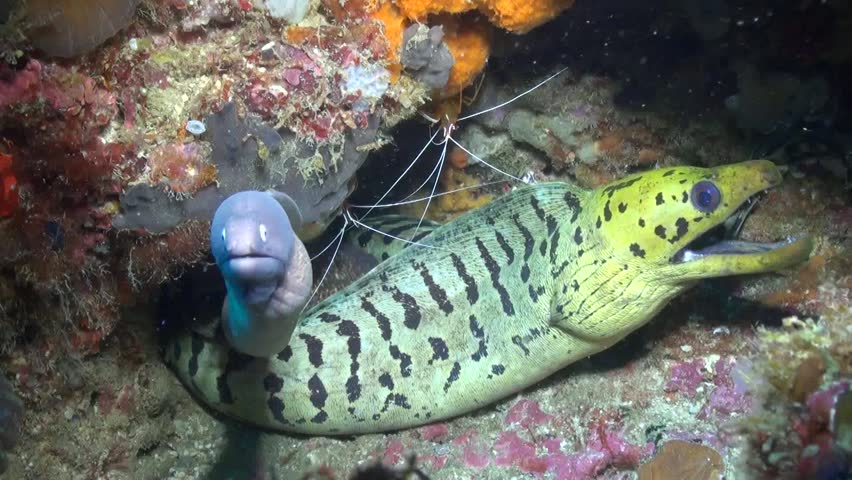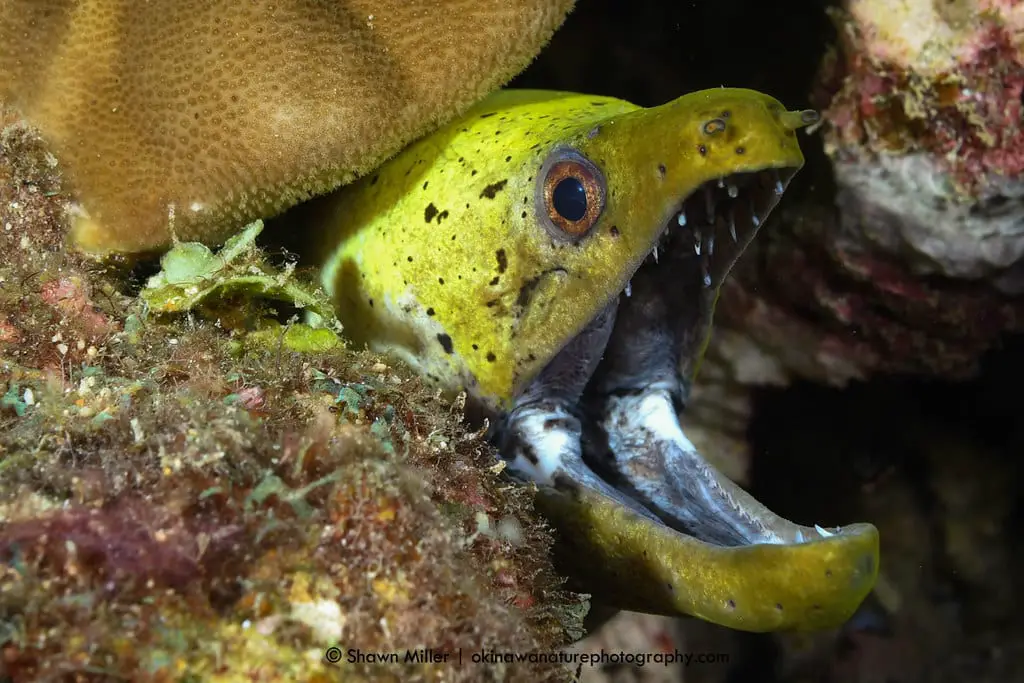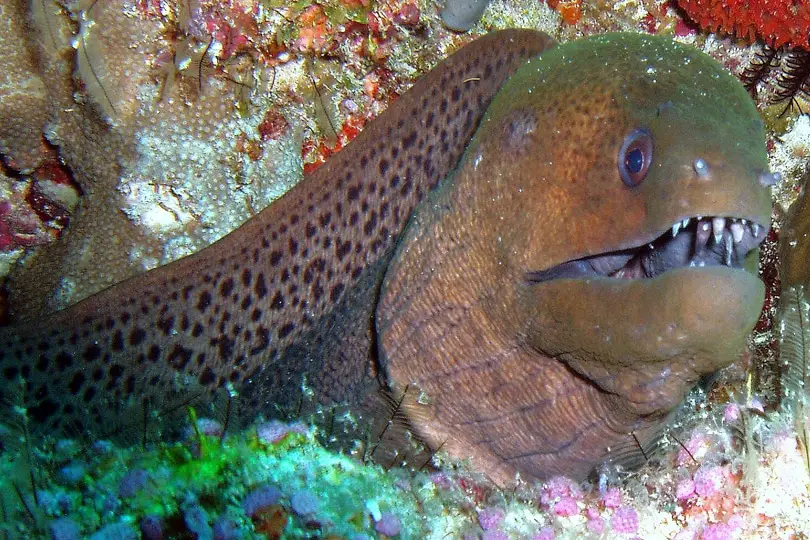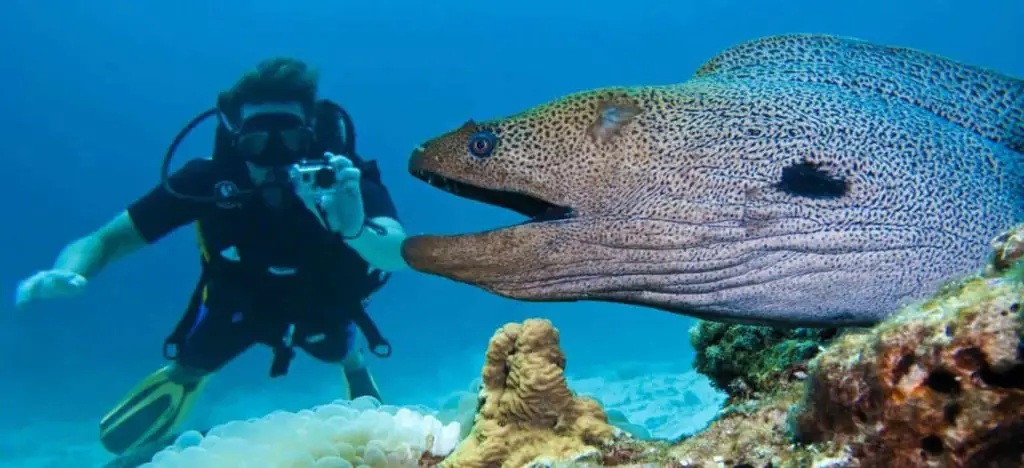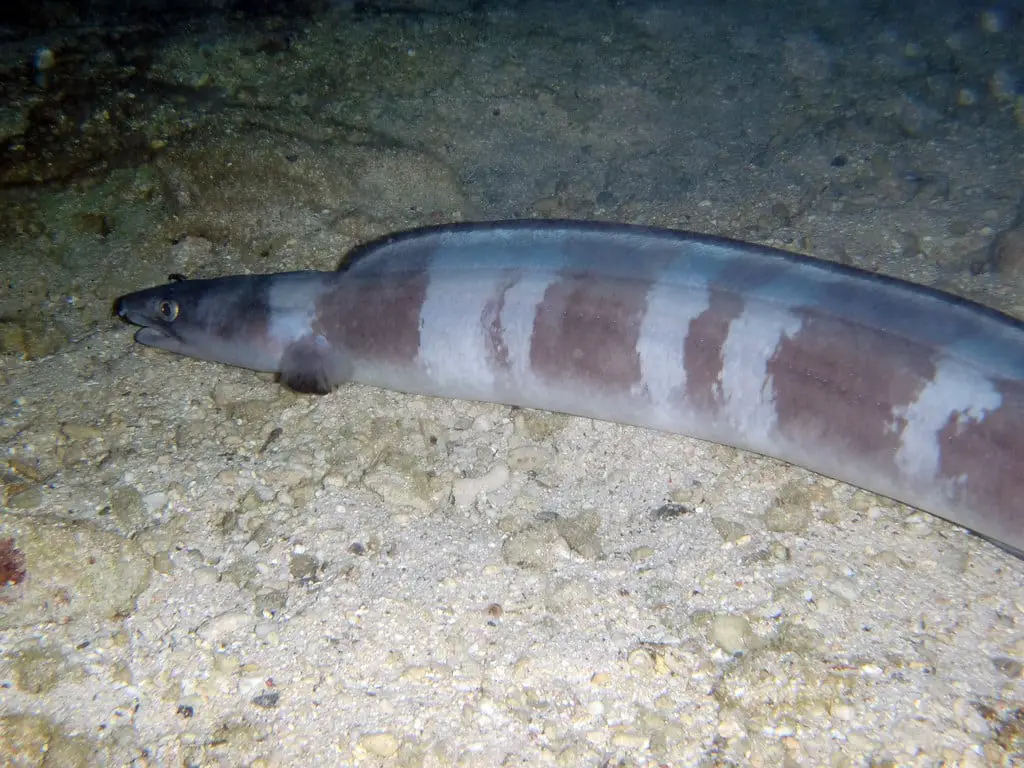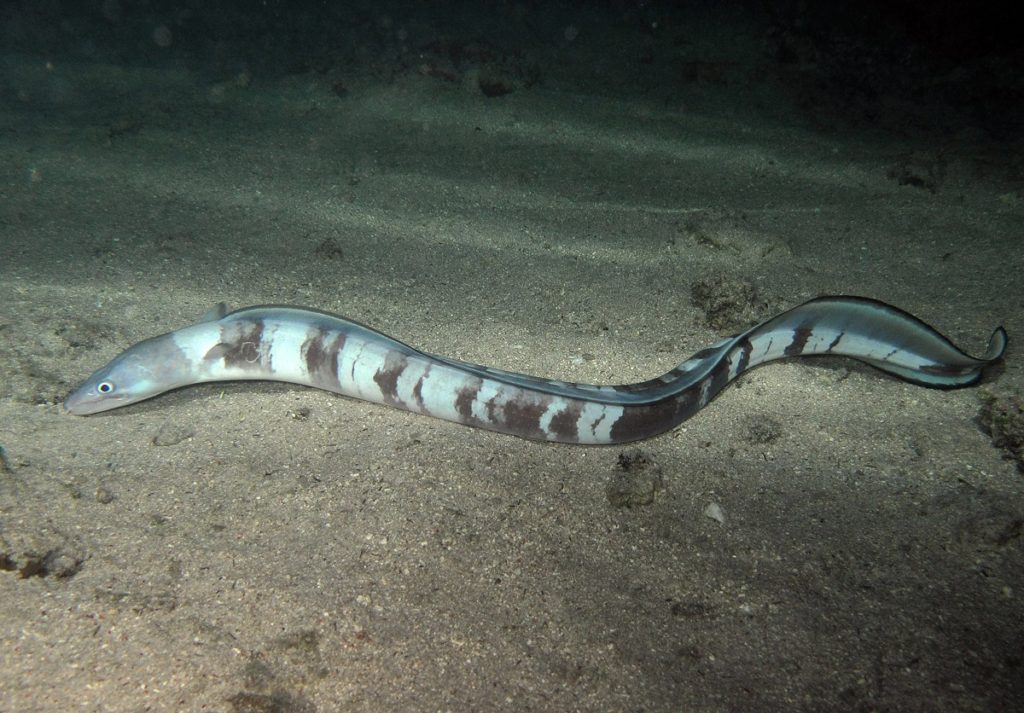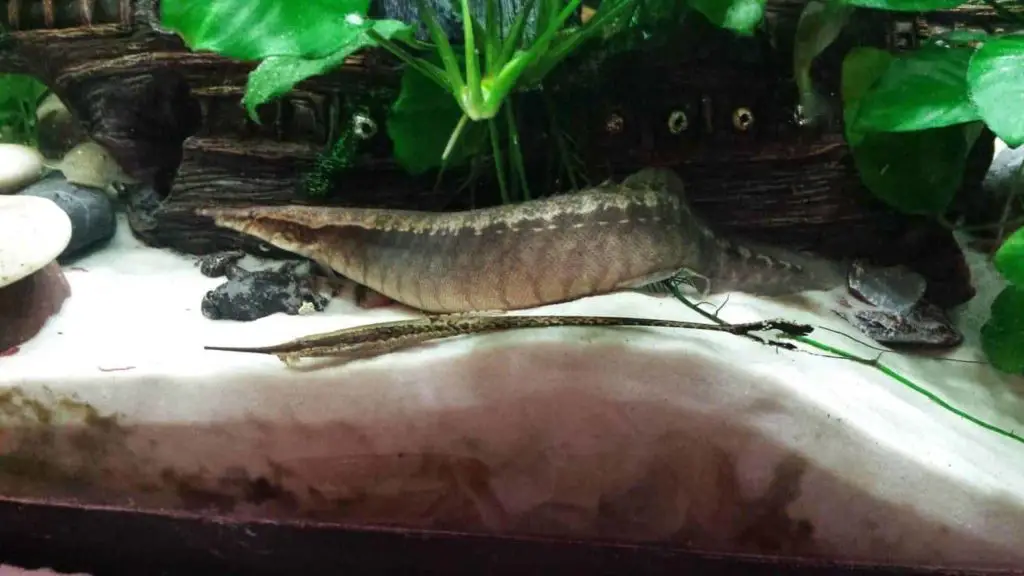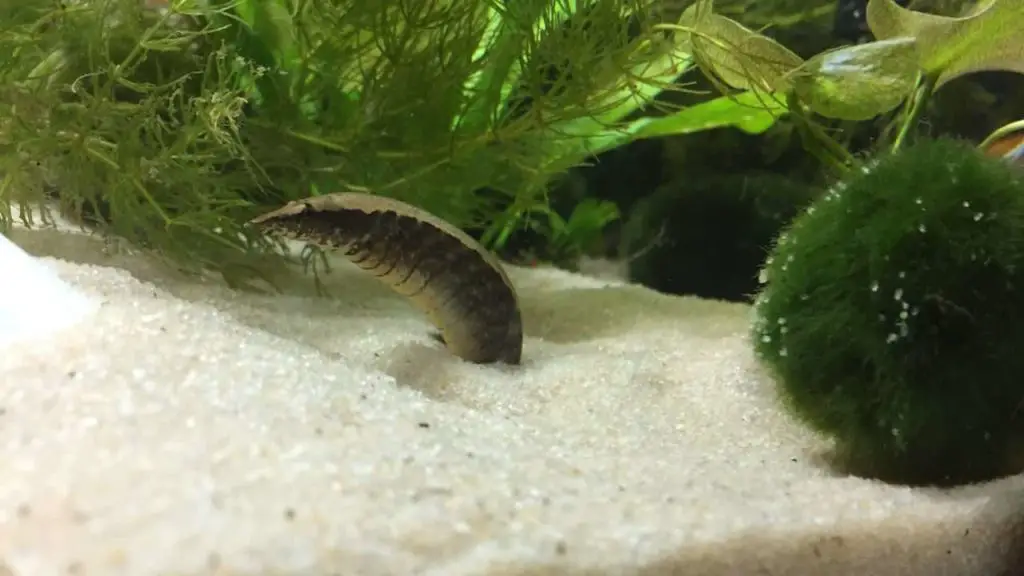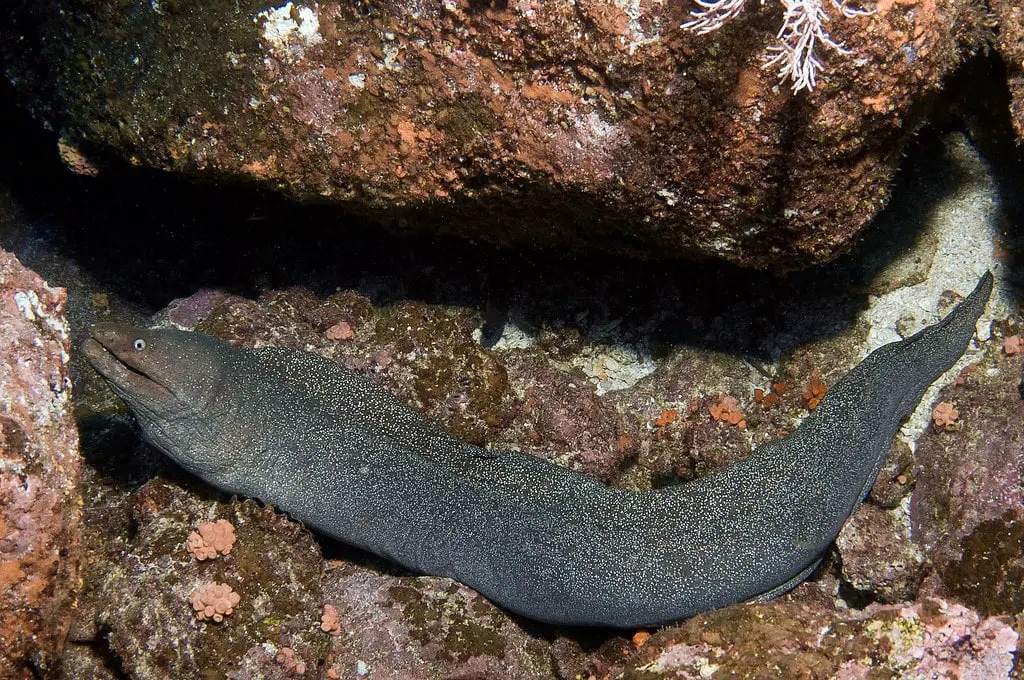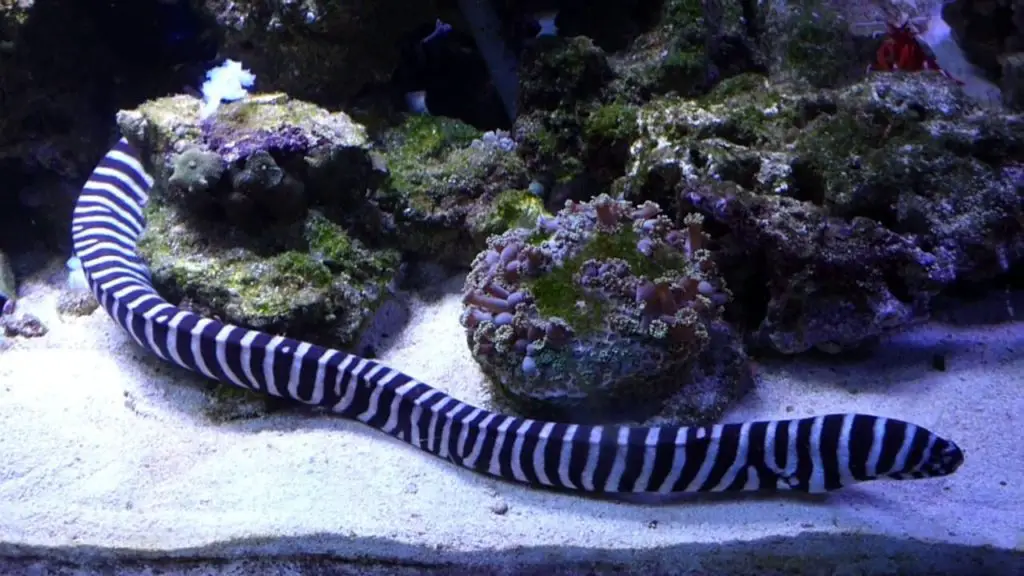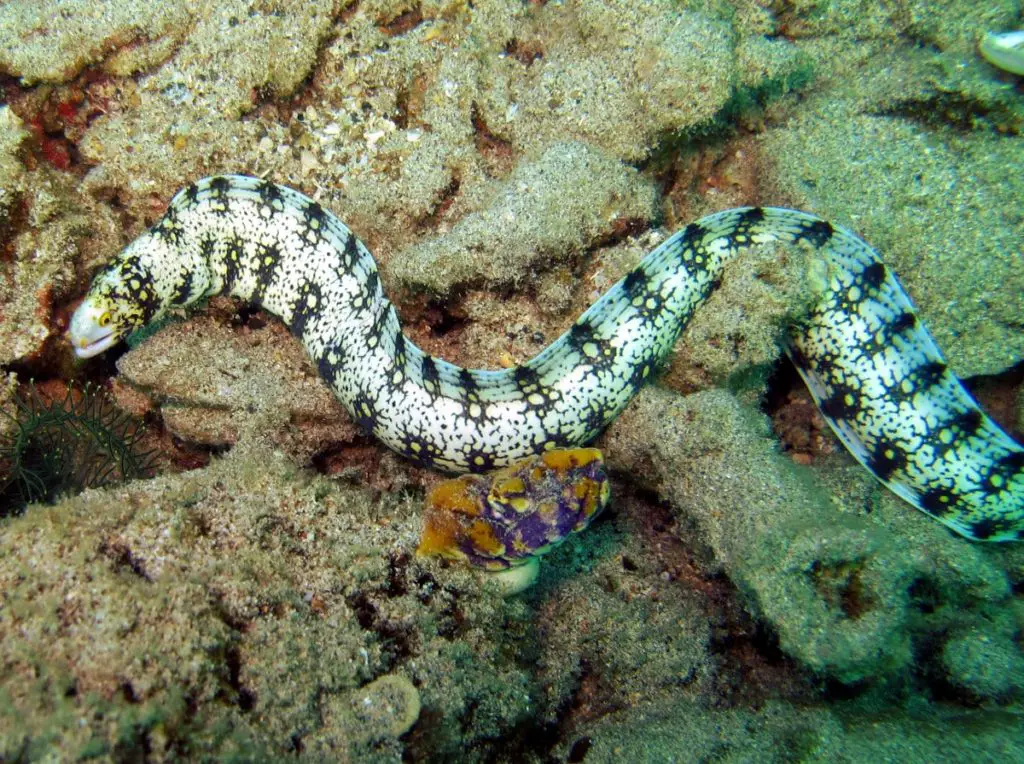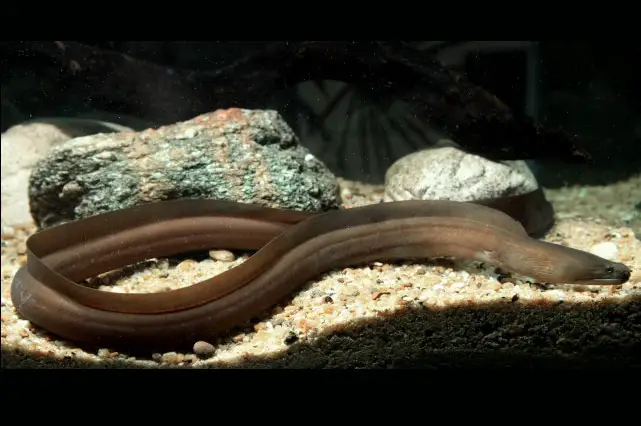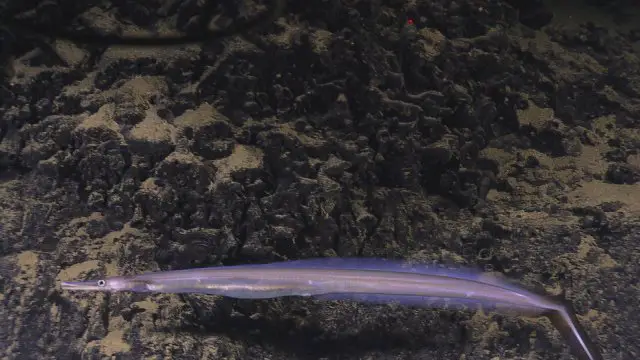There are 19 main types of eels. Each type of eel can be categorized as freshwater or saltwater eels. Eels are ray-finned fish that belong to the order Anguilliformes. In this order, there are 4 suborders, 20 families, 111 genera, and 800 species.
An eel is any ray-finned fish belonging to the order Anguilliformes, which consists of four suborders, 20 families, 111 genera, and about 800 species. Eels undergo considerable development from the early larval stage to the eventual adult stage, and most are predators.
Contents
Freshwater and Saltwater Eels
Freshwater eels have long snake-like bodies with a merged elongated ridge-like fin. These types of eels live in freshwater for most of their lives. However, they migrate to saltwater habitats to mate/breed.
On the other hand, saltwater eels are longer and more cylinder-like than freshwater eels. These kinds of eels also have a more defined set of gills.
All eels travel to the Sargasso see to mate. Read, why do eels migrate? for more information on their long journey which ends with their death.
Moray and Conger Eels
The moray eel ranges from 5 inches to 13 feet in length. They are also carnivorous eels. If you ever had a doubt whether eels are dangerous or not, then the moray eel will definitely let you know (hint, they are).
Moray eels, or Muraenidae (/ˈmɒreɪ, məˈreɪ/), are a family of eels whose members are found worldwide.
There are approximately 200 species in 15 genera which are almost exclusively marine, but several species are regularly seen in brackish water, and a few are found in fresh water.
Congers are scaleless eels with large heads, large gill slits, wide mouths, and strong teeth. They are usually grayish to blackish, with paler bellies and black-edged fins. They too are carnivorous eels.
Conger is a genus of marine congrid eels. It includes some of the largest types of eels, ranging up to 3 m (10 ft) in length, in the case of the European conger.
I keep mentioning that eels are carnivorous for a reason. They are not like guppies where you can just play with them or swim alongside them. If they feel provoked, much like random octopus attacks, they will attack a human. Nonetheless, you can buy these fish online as pets.
Beach Conger
Beach conger eels live in the Northwestern Pacific Ocean and reach lengths of up to 4 feet (see where do eels live? for more info). And, don’t worry they don’t usually crawl up on the shoreline of the beach but they are usually pretty close to it in the shallow waters.
Black Spotted Eel
The black-spotted eel is one of the types of eel that belong to the spiny eel family. They can grow up to 20 inches in length. Other common names for the black-spotted eel are the polka dot eel or spotted spiny eel.
Electric Eel
The electric eel is probably the most famous eel and the first thought that comes to mind when you hear the word eel. This is an honorable mention as they aren’t really eels.
It’s the only animal on the planet that can paralyze its prey using an electrical current. Their electrical current is potent enough to paralyze even mammals as large as cows.
Electric eels also need to breathe air which means that they must frequently surface to take in oxygen or they will drown.
The electric eel (Electrophorus electricus) is a South American electric fish and the only species in its genus. Despite the name, it is not an eel, but rather a knifefish.
Fimbriated Moray
These species of eel grow to about 2.5 feet in length. Fimbriated Moray eels have a yellowish-greenish color with black spots spread over its body. They eat mainly small fish. Read what do eels eat? for more information.
The fimbriated moray (Gymnothorax fimbriatus) also known as darkspotted moray or spot-face morayis a moray eel of the family Muraenidae.
Giant Moray
These types of eels are found in reefs in the indo-pacific region. At maturity, giant morays have leopard-like specks on their bodies. They feed mostly on fish but also small crustaceans.
The giant moray (Gymnothorax javanicus) is a species of moray eel and a species of marine fish. In terms of body mass, it is the largest moray eel (the slender giant moray is longer).
Grey Conger
The grey conger lives in the Atlantic ocean and feeds mostly on finfish. It can grow up to 62 inches, however, the normal length is 35 inches.
It’s also known as the Antillean conger or the conger eel. It’s a marine eel and can be found in the oceans surrounding Cuba, Jamaica, Saint Vincent, and throughout northern South America.
Longfin African Conger
The Longfin African Conger is a type of eel that grows over 4 feet in length and lives down to 262 feet below the water’s surface.
It is also known as the blackfin conger. It’s mostly found in the Indo-Pacific oceans from the Red Sea and East Africa to the Marquesas and Easter islands, north to southern Japan and the Ogasawara Islands, south to northern Australia and Lord Howe Island
Half-Banded Spiny Eel
This eel grows up to 8 inches and has vertical bands around its body, hence the name. They’re nocturnal creatures and make for good pets so long as the other fish in the tank are too big to fit in its mouth.
It’s one of the smaller kinds of eels and it has a long pointy snout at the end of its long body.
Whitespotted Conger
This type of eel gets its name because of the long line of white dot-like spots along its snakelike body. Whitespotted congers can grow up to 36 inches in length.
The white-spotted conger is a marine conger eel that’s found mainly near the Japanese coast, the East China Sea, and Korean Peninsula. It mostly inhabits shallow ocean floors in the sand or mud. The white-spotted conger is eaten in Japan and is a common food choice on many menus.
Snyder’s Moray
Snyder’s Moray is also known as the fine spot moray. These are the smallest types of eels and they measure just about 4 inches in length. It has a long reddish-brown body that’s covered in fine brown and white spots.
Zebra Moray
These eels have zebra-like stripes over their body, hence the name zebra moray. They eat mainly crustaceans, mollusks, and sea urchins.
Snowflake Moray
These eel types eat mainly small fish and crustaceans. They are also known as clouded moray and can grow up to 20 inches in length. The snowflake moray is found in abundance off the eastern coast of Africa throughout Micronesia.
Slender Giant Moray
At a recorded 13 feet in length, the slender giant moray is the longest species of moray to exist. You can tell them apart from other different types of eels by their grayish-brown dorsal fin that fades to white on the ventral.
Slender giant moray eels (Gangetic Moray, Stophidon Sathete) are the longest kinds of eels in the moray family. In 1927, a Gangetic moray found in the Maroochy River, Queensland measured 12.9 feet
Ophichthidae
Ophichthidae are also known as snake eels and they inhabit tropical to warm temperate waters. They are also known to move to rivers. Many species lack fins. This helps them to burrow into the ocean floor in search of food like worms. Most are often spotted or striped in color, imitating the look of venomous sea snakes to dissuade predators.
Cutthroat Eel
Cutthroat eels live in tropical and temperate waters all around the world. These eel types grow between 9.1 to 63.0 inches. They are found at depths of 12,100 ft.
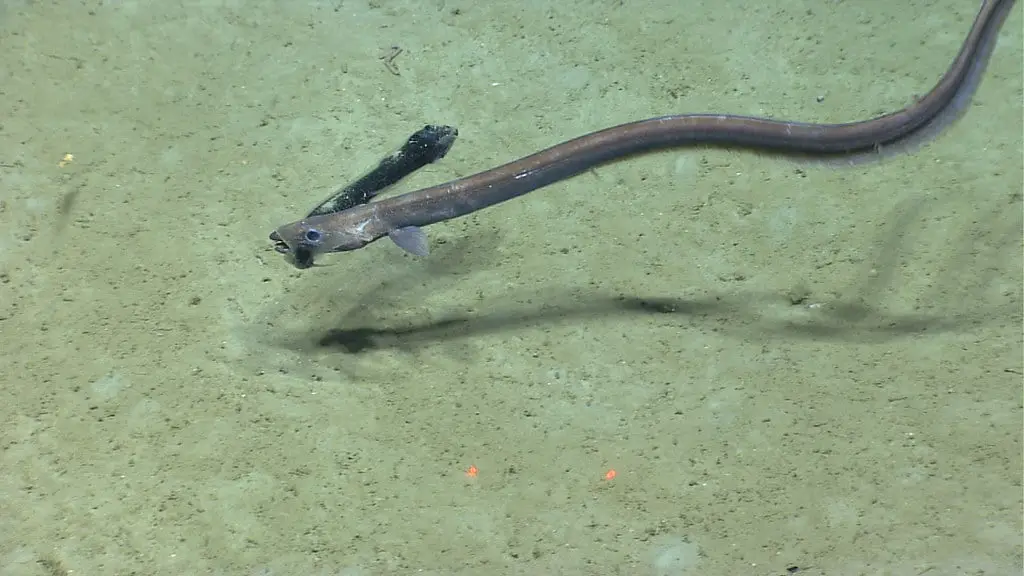
Sawtooth Eel
Sawtooth eels get their name from the human-like arrangement of their inward-slanting teeth attached to the vomer bone in the roof of the mouth.
Snipe Eel
Snipe eels are found in every ocean, mostly at depths of 300–600 meters. These types of eels can grow to lengths between 39–79 inches. The jaws look like the beak of the bird called the snipe.
References
- Eel – Wikipedia
- Slender giant moray – Wikipedia
- Marshall, T. C. (1927), “Ichthyological Notes No. 2”, Memoirs of the Queensland Museum, 9, 1, pp. 107–108
- Shark attacked and eaten by giant Moray eel – Video – YouTube
- Ventral – Definition
- Worlds biggest Snowflake eel (Video) – YouTube
- Zebra moray – Wikipedia
- Snowflake moray – Wikipedia
- Zebra Moray – Video – YouTube
- Anarchias leucurus – Wikipedia
- Fine Spotted Moray Eel off the cost of Galapagos – Video – YouTube
- Whitespotted conger – Wikipedia
- How Many Species of Eel Are There? – WorldAtlas.com
- More Moray Eels at Maldives (KSLOF) – Living Oceans Foundation
- Whitespotted Conger – Video – YouTube
- Half-banded Spiny Eel, Macrognathus circumcinctus Fish Guide
- Half-banded Spiny eel eating worms – Video – YouTube
- Longfin African conger – Wikipedia
- Grey conger – Wikipedia
- Swimming with Giant Conger Eels – Video – YouTube
- Giant moray – Wikipedia
- Feeding a fimbriated moray eel – Video – YouTube
- Fimbriated moray – Wikipedia
- Electric eel – Wikipedia
- Electric Eel – National Geographic
- Six Foot Electric Eel – World’s Deadliest – Nat Geo Wild (Video)
- Spiny Eel – Wikipedia
- Black Spotted Eel, Spotted Spiny Eel, Polka Dot Eel – Animal World
- Large Black Spotted Eel – Video – YouTube
- Huge conger eel caught on camera – Video – YouTube
- Giant eel bites woman vacationing in Hawaii: ‘There was blood everywhere’ – Fox News
- Conger – Wikipedia
- Conger eel – Britannica
- Moray eel – Wikipedia
- Moray Eel vs Shark – Video – NatGeo
- Salt Water Eels – Video – YouTube
- Catching Big Freshwater Eels – Video – YouTube
- Family Ophichthidae – Snake eels – Fishbase
- Ophichthidae – Snake Eels, Worm Eels – The Australian Museum
- Cutthroat eels (Family Synaphobranchidae) – Marine Species Identification Portal
- Froese, Rainer, and Daniel Pauly, eds. (2011). “Serrivomeridae” in FishBase. January 2011 version.
- Froese, Rainer, and Daniel Pauly, eds. (2011). “Nemichthyidae” in FishBase. June 2011 version.
